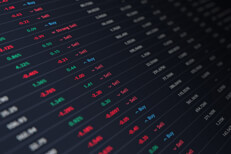Investing in various assets is a common strategy for individuals looking to grow their wealth and secure their financial future. While stocks, bonds, and real estate are often the go-to options, there is another asset that has been gaining attention from seasoned investors – copper.
In this article, we will explore the potential benefits of investing in copper, understand the factors that affect its price, analyze how economic conditions can influence copper investments, and provide tips for successful copper investing. So let’s dive in and discover why copper could be a valuable addition to your investment portfolio.
Copper: A Good Investment?
Copper, a versatile metal crucial to industries like construction, manufacturing, electronics, and renewable energy, offers compelling investment potential. Its conductivity and corrosion resistance make it essential in wiring, plumbing systems, appliances, and electric vehicles. As global demand rises in these sectors, so does the need for copper.
Investing in copper provides portfolio diversification and risk reduction. Adding commodities like copper alongside stocks and bonds spreads risk through increased diversification. Additionally, investing in copper allows you to benefit from its increasing demand as developing economies modernize their infrastructure.
Understanding the factors that impact copper prices is vital for investors. Supply and demand directly influence prices; shortages or increased demand drive up prices while oversupply or decreased demand can lower them. Geopolitical factors such as political stability and government policies in major copper-producing countries affect supply.
Economic conditions and currency fluctuations also play a role.
Supply and Demand Dynamics
Understanding the supply and demand factors that influence copper prices is crucial. The primary source of copper is mining, where disruptions or changes in operations directly affect supply. Demand for copper comes from industries like construction, transportation, electronics, and energy production.
Rapid industrialization in emerging economies like China and India also drives up global copper demand. Economic conditions play a vital role, with strong GDP growth increasing demand for copper. Low-interest-rate environments stimulate economic activity and boost commodity demand.
Changes in trade policies can disrupt global supply chains and impact copper availability. In Part II of this article, we will explore investing in copper stocks and provide tips for successful copper investments. Stay tuned for an insightful analysis of this fascinating sector.
[lyte id=’R_2HSb9nA9Q’]

